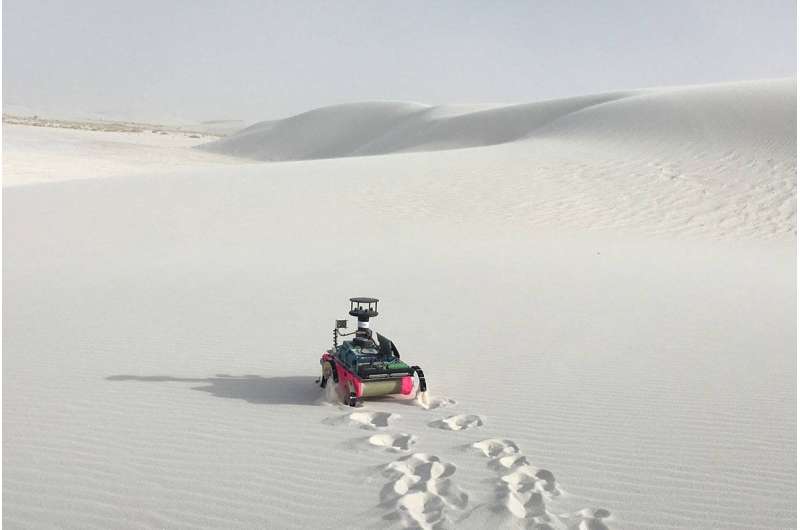Currently, NASA explores Mars' surface and conducts planetary science using wheeled rovers, but Texas A&M University researchers' research will examine the viability of a new type of surface-exploration technology: walking robots.
On the NASA-funded project directed by Feifei Qian, co-investigators Ryan Ewing, Robert R. Berg Professor in Texas A&M's Department of Geology and Geophysics, and Marion Nachon, Associate Research Scientist in Geology and Geophysics, are also involved.a WiSE Gabilan Assistant Professor at the Viterbi School of Engineering at the University of Southern California. The research's goal is to build and test walking, or "legged," robots that could more readily handle challenging settings including frozen surfaces and crusted sand. This will greatly improve scientists' capacity to obtain data from planetary bodies.
Although robots like the Mars Exploration Rovers and others have been successfully launched into space, most of them work according to pre-programmed schedules that need human scientists and engineers to input specific instructions about where to go and what to do before the robots arrive at the planet. Because of this, the robot's ability to modify its plan when faced with unexpected situations or intriguing measurements is constrained. Robots and rovers may struggle to navigate unfamiliar surroundings as a result, or they may even miss valuable research opportunities.
Robot-assisted planetary environment investigation will be improved, according to Ewing, by a better knowledge of how to combine robotics technology with both planetary science and cognitive science. Through this project, advanced, high-mobility robots that can quickly navigate planetary surfaces and adapt to the needs of scientific research will be put to the test.
Ewing said, "We will carry out this research at two important planetary analogue sites that provide well-defined gradients in soil types, from crusty sand at White Sands Dune Field, N. M., to ice rock mixes at Mt. Hood, Ore. "To research the geotechnical features of these soils, we integrate high-mobility legged robots with embedded terrain-sensing technology and cognitive human decision models."
The project makes use of "bio-inspired" robots with legs, whose design is based on how animals move naturally on difficult terrain like soft sand. These robots can "feel" the ground (such as the softness of the sand and the forms of the rocks) through their legs thanks to the most recent "direct-drive" actuator technology. With the ability to adapt their mobility as necessary, the legged robots may interact with their surroundings in a way that is similar to how animals do.
According to Qian, these robots are designed in a way that enables them to "learn what makes these creatures successful on varied terrains, rather than just replicate how the animals look."
These robots can quickly receive information about their surroundings as they move around and modify their exploration techniques in response to this knowledge because to their legs' capacity to "feel" the terrain.
Ewing said, "We'll be trying to figure out how surface crusts, rock-covered soils, and ice content affect the friction and erodibility of different soils. "We will launch the direct-drive legged robots to map soil strength at two sites that are similar to the terrain on the Moon, Mars, and other worlds. We will simultaneously measure environmental parameters that control soil strength, including particle size and shape, soil moisture, chemical composition, and ice content.
Qian points out the benefits of deploying robots and rovers on initial missions to gather knowledge before sending humans are significant as scientists continue to strive to investigate planetary habitats.
Mobile robots can incorporate scientific instruments and aid in taking exact measurements while moving, even in regions where it is safe to send astronauts, according to Qian.
Researchers from the University of Pennsylvania, Georgia Institute of Technology, and NASA's Johnson Space Center are also a part of the research team.
This is the "dream team" and a once-in-a-lifetime opportunity to assemble a whole team for one project, according to Qian.



0 Comments